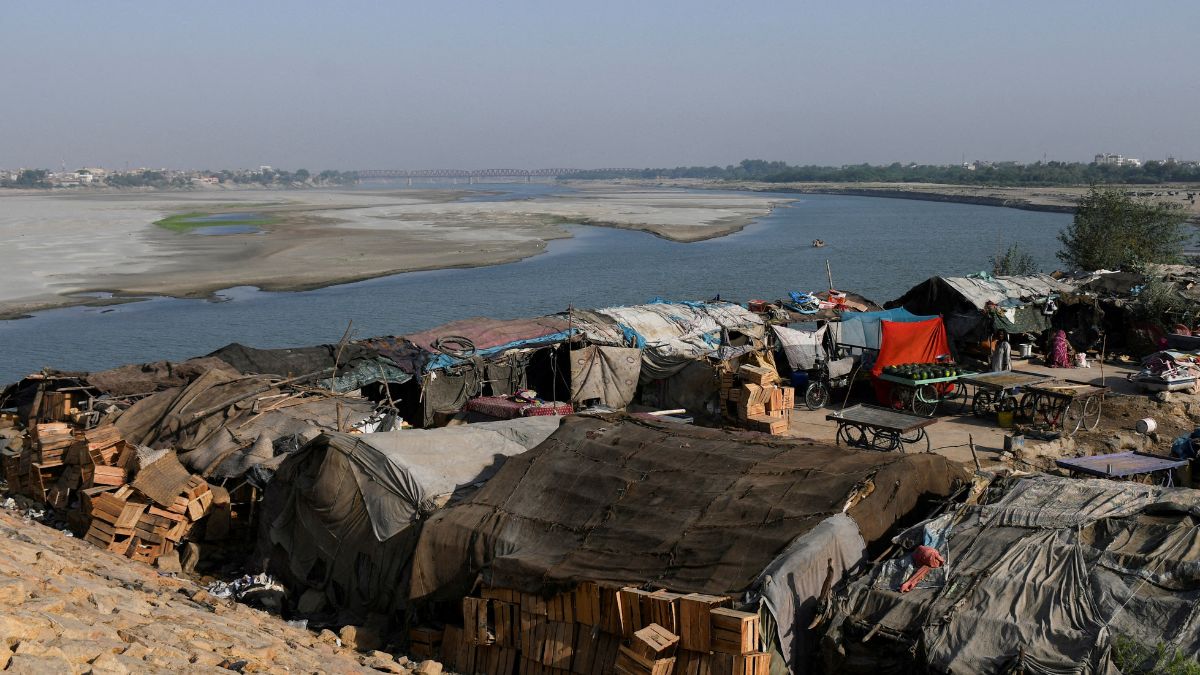The strategic intent of China’s hydropower investments in Pakistan
 A view of tent houses, belonging to squatters, on the dry riverbed of the Indus River in Hyderabad, Pakistan | Reuters
A view of tent houses, belonging to squatters, on the dry riverbed of the Indus River in Hyderabad, Pakistan | Reuters
Water disputes have long been a source of friction between India and Pakistan, with critical river systems playing a key role in the region's geopolitics. As tensions persist, China's involvement has added another layer of complexity to the already delicate situation. In new developments following India’s suspension of the Indus Waters Treaty, China has accelerated construction of the Mohmand Hydropower Project in Pakistan’s Khyber Pakhtunkhwa (KP). With its extensive dam-building projects, strategic interests, and financial influence, Beijing's role in South Asia’s water diplomacy has become increasingly contentious.
Under the China-Pakistan Economic Corridor (CPEC) energy projects, China and Pakistan are working together on 21 renewable energy projects, several of which are hydroelectric projects. Initiated in May 2020, the Mohmand Hydropower Project on the Swat River is a flagship initiative within the China-Pakistan Economic Corridor (CPEC), developed by the China Energy Engineering Corporation. This multi-purpose dam, designed to generate 800 MW of electricity, supply 300 million gallons of drinking water daily to Peshawar, and provide flood control and irrigation benefits, has faced delays, missing its completion deadline in 2024. Recent developments indicate an accelerated construction timeline, with reports now suggesting that full operations may begin by 2027.
Pakistan has been pursuing several ambitious dam projects aimed at bolstering its hydropower capacity and securing water resources for irrigation and flood control. These include the Karot Hydropower Project in Pakistan-Occupied Kashmir (POK) on the Jhelum River, carried out by China Three Gorges (CTG) and Karot Power Company Ltd (KPCL) was finished in 2022. As one of the first batch of priority projects under the CPEC, the Suki Kinari Hydropower Project in KP is more than halfway complete. The facility is the largest overseas greenfield hydropower project financed by a Chinese company. China Three Gorges and CWE Investment Corp have undertaken the 1124 MW capacity Kohala Hydropower Project in PoK. Another proposed hydropower project is the Azad Pattan Hydropower Project in POK.
The Diamer-Bhasha Dam stands as a monumental endeavour, often likened to China’s Three Gorges Dam. Strategically positioned on the River Indus, between Kohistan district in Khyber Pakhtunkhwa and Diamer district in Gilgit-Baltistan, this concrete-filled gravity dam has been in the preliminary stages of construction for an extended period.
Despite its promise of generating 4,500 MW of hydroelectric power and significantly contributing to water storage, the project's financing has become an intricate web of negotiations. Initial hopes of integrating it into the CPEC were met with hesitation from Beijing, as China imposed stringent monetary conditions. The opaque nature of Chinese-backed investments has raised concerns about the long-term economic strain these deals may place on Pakistan. Reports suggest that the secretive financial arrangements could exacerbate Pakistan’s already precarious debt situation. In response, efforts have been made to explore alternative funding sources beyond the scope of CPEC, allowing the revival of the Diamer-Bhasha project while mitigating the risks associated with Chinese financing.
Historically, India did not raise objections to Pakistan's construction of dams like Mangla POK and even cited potential benefits of the Wullar Barrage in J&K, citing its capacity to complement the Mangla Dam’s functionality. Even the Neelum–Jhelum Hydropower Plant, under construction with Chinese assistance since 2008, did not initially provoke strong opposition from India. However, India’s stance has shifted in response to China’s expanding role in Pakistan’s water infrastructure, sparking concerns over strategic implications. In 2017, India issued demarches to both Pakistan and China, conveying its position on the construction of dams on the Indus River in PoK.
CPEC hydropower projects are touted as crucial for Pakistan’s energy needs, many experts and local communities view them as excessive, serving China’s strategic interests rather than Pakistan’s long-term sustainability. While these projects promise economic benefits and enhanced hydropower capacity, they have also become targets for security threats, particularly against Chinese workers involved in construction efforts. These large-scale infrastructure projects also pose environmental and geopolitical challenges. The construction of dams and hydropower facilities under CPEC is likely to alter water flow patterns, disrupt aquatic ecosystems, and raise concerns about water distribution among downstream communities. The Diamer-Bhasha Dam, in particular, exemplifies the dual nature of such projects—bringing potential economic growth while necessitating careful financial and ecological considerations. The repercussions of these developments have not been confined to policy discussions alone. In PoK, residents have been denouncing the Neelum-Jhelum and Kohala Hydropower projects, citing their detrimental impact on local ecosystems and livelihoods.
China’s deepening involvement in Pakistan’s dam construction has intensified debates over its broader geopolitical motives. Its dominance in water supply management extends far beyond resource allocation—it serves as a potent instrument in financial negotiations, diplomatic engagements, and regional alliance-building. The inherent asymmetry in water governance further bolsters China’s strategic influence, providing it with a decisive advantage in shaping political narratives and structuring interactions with neighbouring states. These developments are reshaping regional water dynamics, highlighting the processes of securitisation of water as a non-traditional security issue.
The author is a security and economic affairs analyst
World